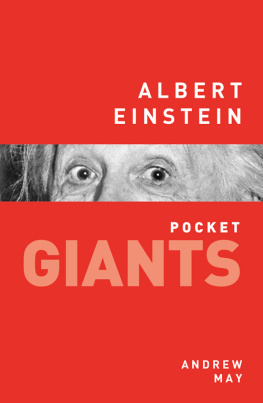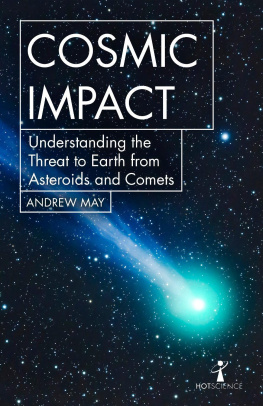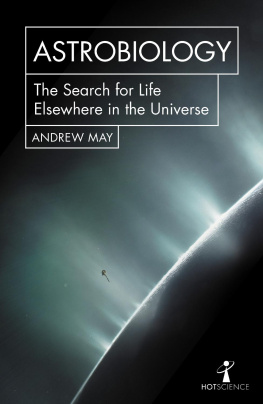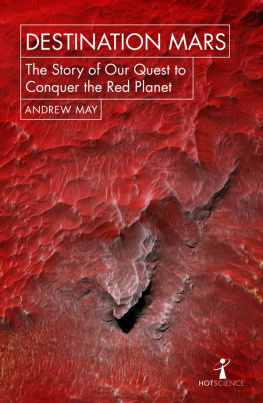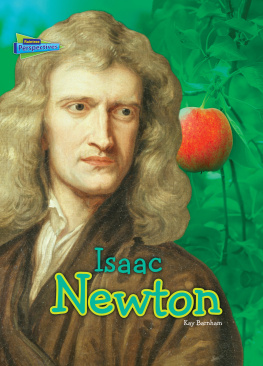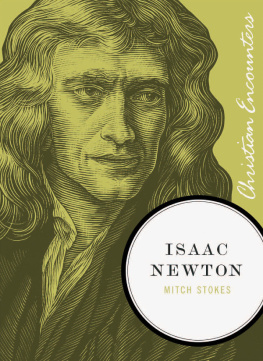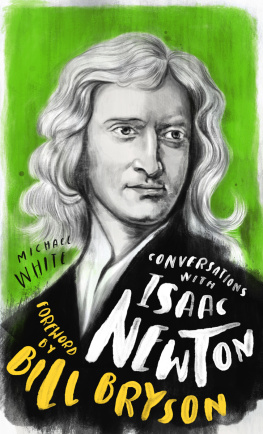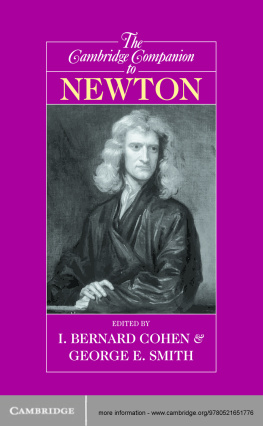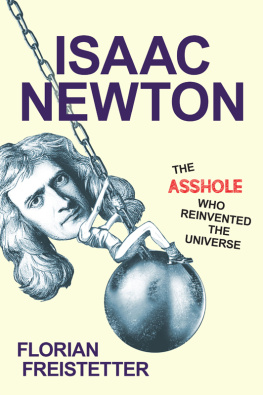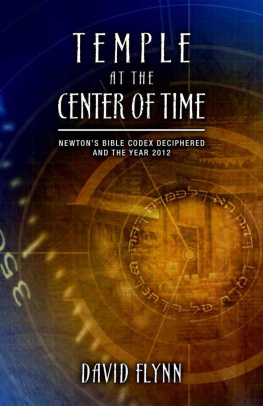1
God said, Let Newton be! and all was light.
The world has changed beyond recognition since Isaac Newtons time. Feats of engineering that we now take for granted would have been unimaginable three centuries ago: skyscrapers half a kilometre high, 100,000-ton ocean liners, supersonic aircraft, artificial satellites, interplanetary space probes And the methods employed by designers today would have seemed strange and magical to a person of the seventeenth century, for the process starts with the writing down of symbols on a piece of paper (or, these days, on a computer screen) precise mathematical equations describing the forces, motions and interactions involved. In the realm of modern engineering, everything has a symbolic life before it takes on a real, material existence.
The same principle extends far beyond man-made technology. Bizarre and improbable as it may seem on the face of it, everything in the physical universe obeys strict mathematical rules. At the start of the seventeenth century, no-one would have believed that. By the end of the eighteenth century, however, virtually everyone did so. The man who persuaded the world to change its mind was Isaac Newton.
When Newton started his studies, universities throughout Europe were still teaching Aristotles system of natural philosophy as the standard picture of the physical world. Aristotles theory had no symbols or equations in it. Some of the pre-Aristotelian Greek philosophers notably Pythagoras and his followers did believe in a fundamentally mathematical world, but over time their views had fallen out of favour. More often than not such ideas were dismissed as the musings of crackpots or mystical dreamers. A similar attitude prevailed towards the Hermetic philosophers of mediaeval Europe a small and secretive minority who believed that, with sufficient diligence, it would be possible to discover a simple set of rules capable of explaining the complexities of the natural world.
The situation in Newtons time was, in a sense, the mirror image of the present day. What then seemed to be a bizarre and mystical notion that the universe obeys simple mathematical laws is now seen as the rational view. But in those days, rational people tended to assume the exact opposite. The world looked complex, chaotic and unpredictable so clearly it could have nothing to do with the simplicity of mathematics.
When Newton published his greatest masterpiece in 1687, he called it Philosophiae Naturalis Principia Mathematica Mathematical Principles of Natural Philosophy. The book was a revolution, and the essence of that revolution is summed up in the title. Before 1687, Mathematical Principles and Natural Philosophy were two completely different branches of knowledge, poles apart. After Principia they would be tied together by a bond that could never be broken.
Today, as an academic discipline, theoretical physics is virtually synonymous with applied mathematics. You cannot study either subject without seeing Newtons influence at every turn. He discovered the law of gravity and codified the laws of motion. He developed pioneering methods in mathematics. He invented a new kind of telescope and brought new insights to the analysis of optical phenomena. Science has continued to advance since Newtons time, but it has done so by building on his work, not by sweeping it aside. For all the scientific revolutions of later centuries, the world continues to obey the basic mathematical laws discovered by Newton. There is no disputing the fact that we live in a Newtonian universe.
Was this the goal that Newton was working towards? Did he have a prophetic vision of modern science which he pursued single-mindedly throughout his life? Was it his intention to transform human understanding?
The answer is almost certainly no. All the towering accomplishments for which Newton is remembered were made in a few short bursts, dotted among countless other studies theology, alchemy, ancient history which are now all but forgotten. On the few occasions Newton could be persuaded to publish his scientific work, he did so with obvious reluctance. Science, in the modern sense of the word, was just one small aspect of what inspired him.
This fact was carefully swept under the carpet for two hundred years. Throughout the eighteenth and nineteenth centuries, historians focused on Newtons scientific achievements to the virtual exclusion of everything else. It is only in the last hundred years or so that some people and still only a minority have made an effort to understand Newton as something other than a modern scientist. A prominent figure in this context was John Maynard Keynes, a man best known as one of the twentieth centurys leading economists. During the 1930s, he became increasingly interested in Newtons life and purchased a number of his unpublished private papers.
The papers Keynes acquired were ones that did not interest the academic institutions of the day, dealing as they did with unimportant subjects such as alchemy and religion. Yet it is these very writings that give the clearest insight into Newtons personality and motivation. Through them it becomes clear that his scientific and non-scientific activities were all part of the same basic quest. As Keynes wrote: He looked on the whole universe and all that is in it as a riddle, as a secret which could be read by applying pure thought to certain evidence, certain mystic clues which God had laid about the world.
Horrifying as it may sound to modern scientists, Isaac Newton was a Creationist. He believed that God had made the universe according to a precise and rational design. He also believed that the details of this design had been fully revealed to the people of the earliest civilisations. In other words, just like the New Agers of today, Newton was a believer in ancient wisdom prisca sapientia , as it was known in Latin. He believed that over the course of time this primal knowledge had been lost, and he considered it his lifes work to rediscover it. His study of mathematics and natural philosophy formed part of this quest, but so did his alchemical and biblical researches. To Newton, all these activities were equally important.
Like the mediaeval Hermeticists before him, Newton believed there were ancient secrets hidden in cryptic documents or encoded in the very structure of the universe, waiting to be unlocked. To quote Keynes again:
He believed that these clues were to be found partly in the evidence of the heavens and in the constitution of elements but also partly in certain papers and traditions handed down by the brethren in an unbroken chain back to the original cryptic revelation in Babylonia. He regarded the universe as a cryptogram set by the Almighty.
One of the most important principles of Hermetic philosophy is enshrined in the maxim, As above, so below. In other words, there is a correspondence between the familiar world of human experience and the universe on a cosmic scale. It was a principle Newton took to heart. It infused everything he turned his mind to, from alchemy and the chronology of ancient kingdoms to the mathematical principles of natural philosophy.
It is difficult to avoid the conclusion that Newtons greatest scientific and mathematical achievement the foundation stone of modern rational science was the fruit of a broader project which today would be dismissed as mystical nonsense. To Newton, mathematics was nothing less than the language of God. As confirmation of this, he cited The Wisdom of Solomon 11:20: Thou hast ordered all things in measure and number and weight. Just like the Christian fundamentalists whom modern scientists consider to be their arch opponents, Newton looked to the Bible as the ultimate authority in all things.


